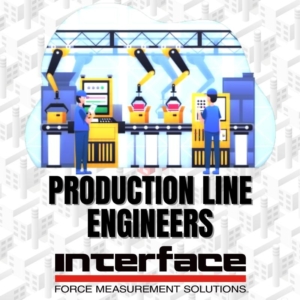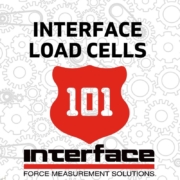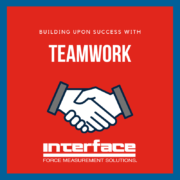Interface Solutions for Production Line Engineers
 Due to the influence of IoT, AI and big data, the role of production line engineer has become far more critical as manufacturers demand peak efficiency. These engineers need to stay current in automation technologies used to design, build, and monitor a production line for the benefits of decreasing speed to market, lowering costs, and improving outputs at the highest quality standards.
Due to the influence of IoT, AI and big data, the role of production line engineer has become far more critical as manufacturers demand peak efficiency. These engineers need to stay current in automation technologies used to design, build, and monitor a production line for the benefits of decreasing speed to market, lowering costs, and improving outputs at the highest quality standards.
Among the many software and hardware solutions these individuals must also understand connected sensors are among the most important. Sensors are the nervous system of an automated production line, telling which machines must perform certain tasks, when, and how. They are a source for smart factories and smart manufacturing.
Sensors modernize manufacturing, assembly, and production lines by enabling real-time monitoring and control of the production process.
Measurement solutions provide accurate data on production parameters such as temperature, speed, pressure, force, and other relevant variables, which can then be used to optimize the production process, detect, and resolve problems in real-time, and prevent downtime. Additionally, sensors can be integrated into industrial IoT systems to provide valuable insights and analytics that can help manufacturers make data-driven decisions.
One of the sensor types that play a key role in these automated production lines are force sensors. Force sensors can be used by production line engineers across several different facets of an automated line. When designing a manufacturing line, there are quite a few factors that go into the full system. This includes process monitoring, quality control, predictive maintenance, energy management and inventory management. Force sensors play a role in each of these types of data points and processes.
For instance, a production line engineer can install sensors onto a machine that outputs a great deal of torque and monitor that torque to ensure the components creating that force are running smoothly, or if there are certain indicators that say it needs to be pulled off the line briefly for maintenance. When products on the line trigger certain force parameters such as weight, this can also tell the automated production line it is ready for the next stop in the process. Production line engineers design these lines around the sensing capabilities available and connected force sensing products have made a major difference in helping things become more efficient.
There is another automated process that also requires force sensors that is used as part of a manufacturing line, or as a standalone system – robotics. Production line engineers are doing a great deal of research and development into robotics to automate process that are repetitive, or far too delicate for human hands. Force sensors, in this use case, are used in both the testing of robotics to ensure accuracy or developed into the robotics to monitor certain functions over time.
Robotics can improve assembly and production processes, leading to higher efficiency, improved quality, and reduced costs. As technology continues to advance, the use of robotics by production line engineers in assembly and production is likely to become even more widespread.
Here at Interface, we have a great deal of experience in developing solutions for industrial automation and manufacturing lines. We have developed a few application notes to outline how production line engineers use our sensor solutions and force measurement products.
6-Axis Force Plate Robotic Arm
A customer wanted to measure the reaction forces of their robotic arm for safety purposes. The reaction loads occur at the robotic arm’s base; therefore, they needed a force measurement system at the base of the robotic arm. Interface suggested using their force plate option to install at the base of the robotic arm. Four 3-Axis Force Load Cells were installed between two force plates, then installed at the bottom of the arm. This creates one large 6-Axis Force Plate. The sensors force data is recorded and displayed through the two BX8 Multi-Channel Bridge Amplifier and Data Acquisition Systems onto the customer’s PC or laptop. Interface’s 6-Axis Force Plate was able to successfully measure the reaction forces of the customer’s robotic arm. Read more here.
Press Load Monitoring
Press forming is a method to deform varied materials. For instance, materials such as steel can be bent, stretched, or formed into shapes. A force measurement solution is required to monitor the forces being applied by the press forming machine. This ensures quality control and traceability during the production process. For large press forming machines, Interface recommends installing the 1000 High-Capacity Fatigue-Rated LowProfile™ Load Cell. When the material is placed under the punch plate to form a shape, the force applied is measured by the 1000 Series Load Cell. The force results captured is sent to the INF-USB3 Universal Serial Bus Single Channel PC Interface Module, where results can be graphed and logged on the customer’s PC with provided software. Interface’s force measurement products and instrumentation accurately monitored and logged the force results of the press force machine, ensuring zero-error production performance. Learn more about this application here.
Snack Weighing and Packaging Machine
A snack manufacturing brand wanted to weigh the amount of their snacks that is automatically dispersed into the bags during the packaging process. In this case, they wanted to weigh their potato chips being packaged. The company also wanted to ensure the potato chips are at the exact weight needed due to regulatory standards to be distributed out to consumers in the public. Interface’s solution was to use multiple SPI Platform Scale Load Cells, and install it to the potato multi-head weigher and packaging machine. The SPI Platform Scale Load cells were installed inside of the mount that attaches the head weigher to the packaging machine. Force results from the potato chips were read by the load cells and sent to the ISG Isolated DIN Rail Mount Signal Conditioner, where the customer is able to control the automated production from their command center. Using this solution, the customer was able to determine the weight of the potato chips being distributed into their bags with highly accurate results. They also were able to control the automated production process with the provided instrumentation. They will use this same weighing method for other snacks that need to be packaged. Read about the solution here.
Production line engineers turn to Interface due to our quality, accuracy, and reliability. Our products are used to test, monitor in real time, and created automated processes within a manufacturing line. As automation and robotics grow, you will continue to see new applications for sensors in this sector.
ADDITIONAL RESOURCES
IoT Industrial Robotic Arm App Note
Quality Engineers Require Accurate Force Measurement Solutions
Vision Sensor Technology Increases Production Reliability
Force Measurement Solutions for Advanced Manufacturing Robotics
Robotics and Automation are Changing Modern Manufacturing at Interface
Industrial-Automation-Brochure-1








